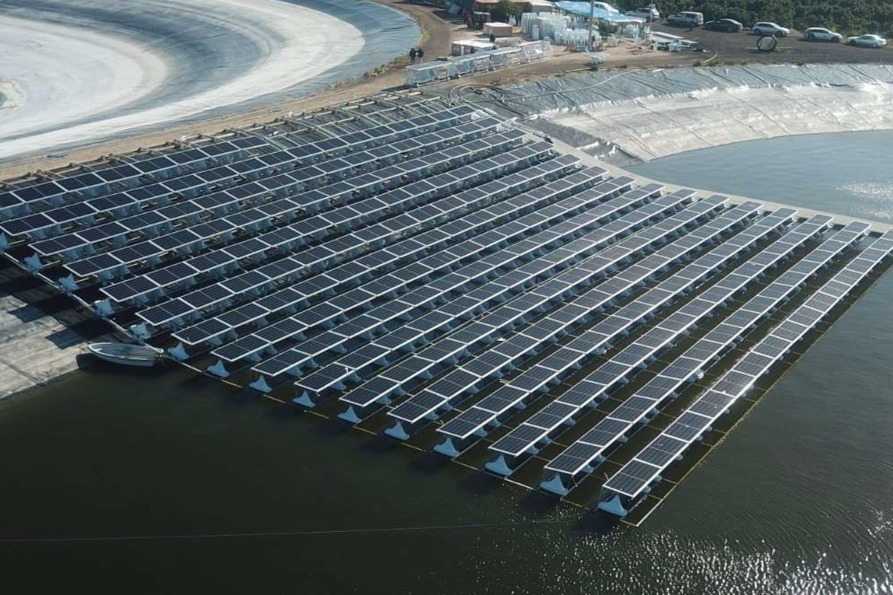
SolarPower Europe – the representative trade body for the European solar industry – has published its first Best Practice Guidelines document for the floating solar (FPV) market segment.
According to SolarPower Europe’s data the FPV market grew at an average 51% compound annual growth rate (CAGR) from 2019 to 2022, representing capacity change from 1.89GW to 5.7GW, and analysts have estimated the potential global FPV capacity on man-made water bodies could range between 3-7TW.
Unlock unlimited access for 12 whole months of distinctive global analysis
Photovoltaics International is now included.
- Regular insight and analysis of the industry’s biggest developments
- In-depth interviews with the industry’s leading figures
- Unlimited digital access to the PV Tech Power journal catalogue
- Unlimited digital access to the Photovoltaics International journal catalogue
- Access to more than 1,000 technical papers
- Discounts on Solar Media’s portfolio of events, in-person and virtual
Or continue reading this article for free
FPV is still a nascent technology in Europe, the report said, and global capacity is predominantly concentrated in China. Of the approximately 451MW of grid-connected FPV in Europe, 61% (280MW) is in the Netherlands, followed by France, Austria, Germany and Spain.
A solution that holds water…
Beyond market statistics, SolarPower Europe’s report presents FPV as a multi-faceted solution to the challenges of climate change. Rising temperatures can reduce fresh water supply for agriculture, and regions across the globe – including southern and western Europe – have suffered from water shortages as a result.
There is also the familiar spectre of carbon emissions and their impact on the natural world, as well as the energy price crisis that his hit much of the world since the Russian invasion of Ukraine in 2022 and accelerated the drive for renewable energy deployment. Beyond these, the growing concern of land scarcity and use is increasingly on the radar of governments and organisations.
Floating solar, SolarPower Europe says, can help to mitigate these concerns. Using existing man-made bodies of water for solar generation allows the continued rollout of renewables whilst leaving land free for other uses; it allows the original function of the body of water to remain operational, whilst also producing energy, and studies have shown that panels supported above water also reduces evaporation levels, which can prove a boon to areas prone to drought.
From a technical standpoint, it’s now been established that the cooling effect of water beneath solar modules can increase their efficiency, maintaining operating temperatures more consistently in the ideal range. This is similar in principle to the effects of agrivoltaics, the dual use of land for farming and solar energy where water vapour that is transpired from plants beneath the panels can cool the modules and increase efficiency.
But FPV is being held back in Europe by a lack of policy support, long permitting queues and social pushback. For example, the fact that FPV is a novel and unique technology means that permitting processes can be complex and bureaucratic without a standardised permit pathway. SolarPower Europe also points to the perceived visual and environmental impacts of FPV that lead to social opposition.
Best practice
Permitting processes, the report said, can differ from country to country. It continued:
“Special permits/concessions are regularly required for FPV installations… Also, the lack of specific permitting regulations for FPV can create a barrier; since it leads to legal uncertainties for investors, who need to know what permits are required, and what documentation needs to be prepared to successfully obtain the permits, and for national authorities that need to assess the permit requirements.”
Building laws (which may be complex as the plant is often anchored to either the water bed or the bank), water-specific legislation and environmental permitting – depending on the nature of the water in question, as man-made sites often have fewer protections – all need specific examination to allow FPV plants to gain ground.
The other notable recommendations concerned operations and maintenance (O&M); introducing a body of water naturally complicates the process of running a solar PV plant.
Anchoring and mooring the system and accounting for waves, water level change, winds and depth presents a unique O&M challenge. Anchoring and mooring systems are also the main driver of the increased cost for an FPV system over ground-mount.
Modules in an FPV system are also subject to the attention of birds, given the relative shelter and distance from humans of many systems. Coupled with the constant motion of the water and fluctuating temperature, FPV is subsequently more at risk of ‘module mismatch’, the term for uneven energy production across a system due to soiling. This is exacerbated more if a site uses bifacial modules, the report said.
Modules in an FPV array can also change tilt or orientation rapidly, given their fluid foundations. This can worsen module mismatching and cause issues along a whole string.
One solution to mismatch that SolarPower Europe recommends is the use of power optimisers or Module-Level-Power-Electronics which can extract that maximum power from each module without impacting the entire string. This, the report said, results in higher yields and subsequently higher return on investment for FPV developers.
The report, which can be read in full here, also highlights electrical and operational safety, remote monitoring and the specific issues caused by aquatic animals during the construction phase, most notably the coypus – a large semi-aquatic rodent – which can damage cabling. A number of best practice case studies from across Europe are also included.
